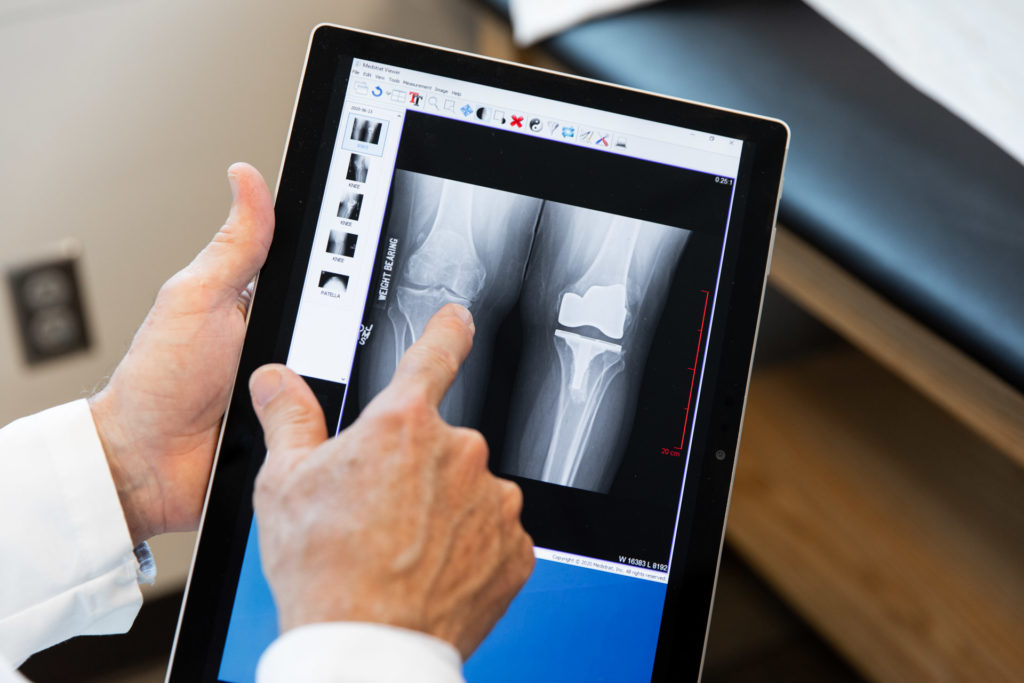
What is a DEXA bone density scan?
A Bone Health or DEXA scan (Dual Energy Xray Absorptiometry) is performed to determine the level of Osteoporosis. This is not done in our office. It is a scheduled test that is done in a hospital or imaging center. During a DEXA bone density scan the patient lays on an x-ray table and two x-ray beams are passed over the body and through the bones. It measures the bone mineral density and bone loss. A Radiologist then interprets the DEXA bone density scan. This scan is safe and painless. A DEXA scan usually measures the lumbar spine, hip or radius bone in the forearm. It is a snapshot of the bone density in the skeleton.

A bone density test is recommended for women >65y/o, men >70y/o, if you break a bone after 50y/o, postmenopausal woman <65y/o with risk factors, or men 50-69y/o with risk factors.
T scores are used to report bone density test results. The T score shows how much different your bone density is compared to a healthy 30-year old adult. Normal bone density is defined as a T score > -1.0, such as 0.5 or -0.7. Osteopenia is defined as a T score from -1 to -2.5. Osteoporosis is defined as a T score <-2.5. DEXA bone density scans are usually repeated every 2 years but can be performed one year after treatment is initiated. The lowest T-score is used to diagnose Osteoporosis.
To help determine if you need treatment, a provider can use a fracture risk assessment tool called FRAX. A FRAX score calculates your 10-year risk of hip fracture or a major osteoporosis related fracture. Treatment is usually started if someone has a 10-year probability of hip fracture of >3% or a >20% major osteoporotic fracture in conjunction with a low bone mass (<-1.0). FRAX score includes risk factors such as sex, age, previous fracture, height, weight, smoking status, oral steroid use, secondary osteoporosis, parental history of hip fracture, alcohol intake, Rheumatoid arthritis and DEXA bone mineral density score.


